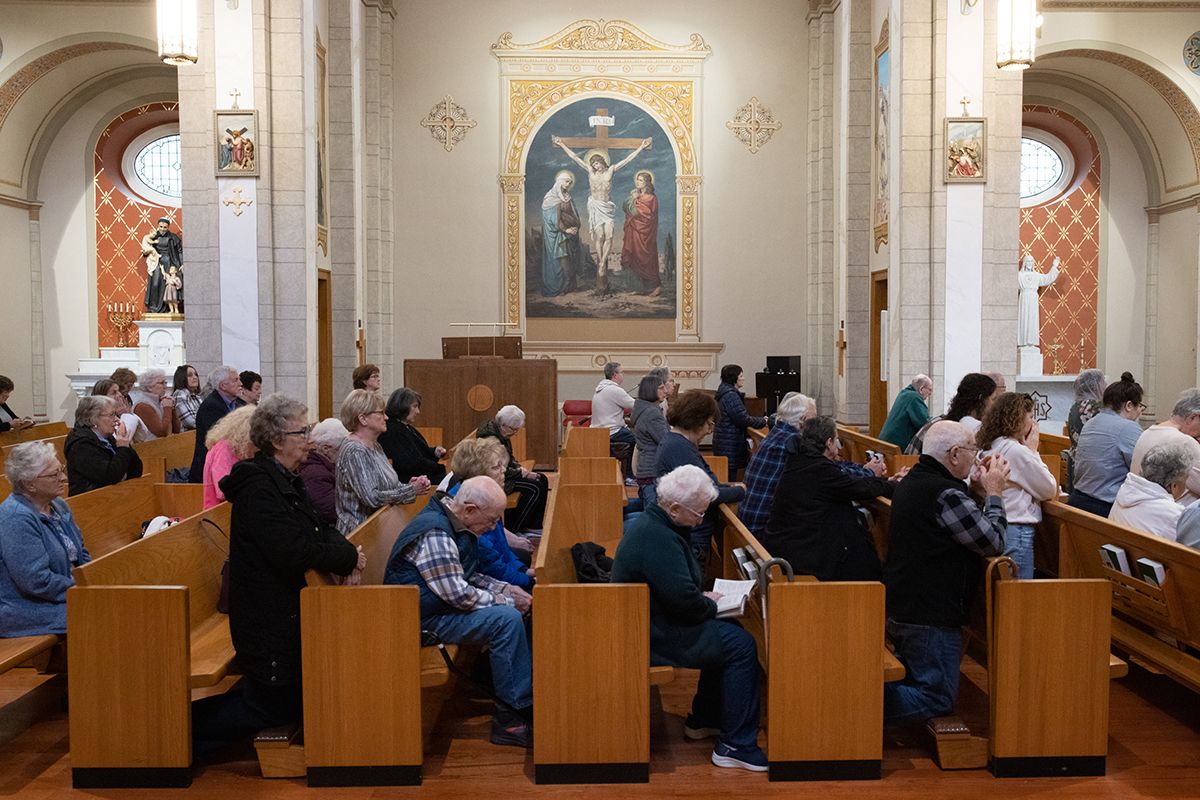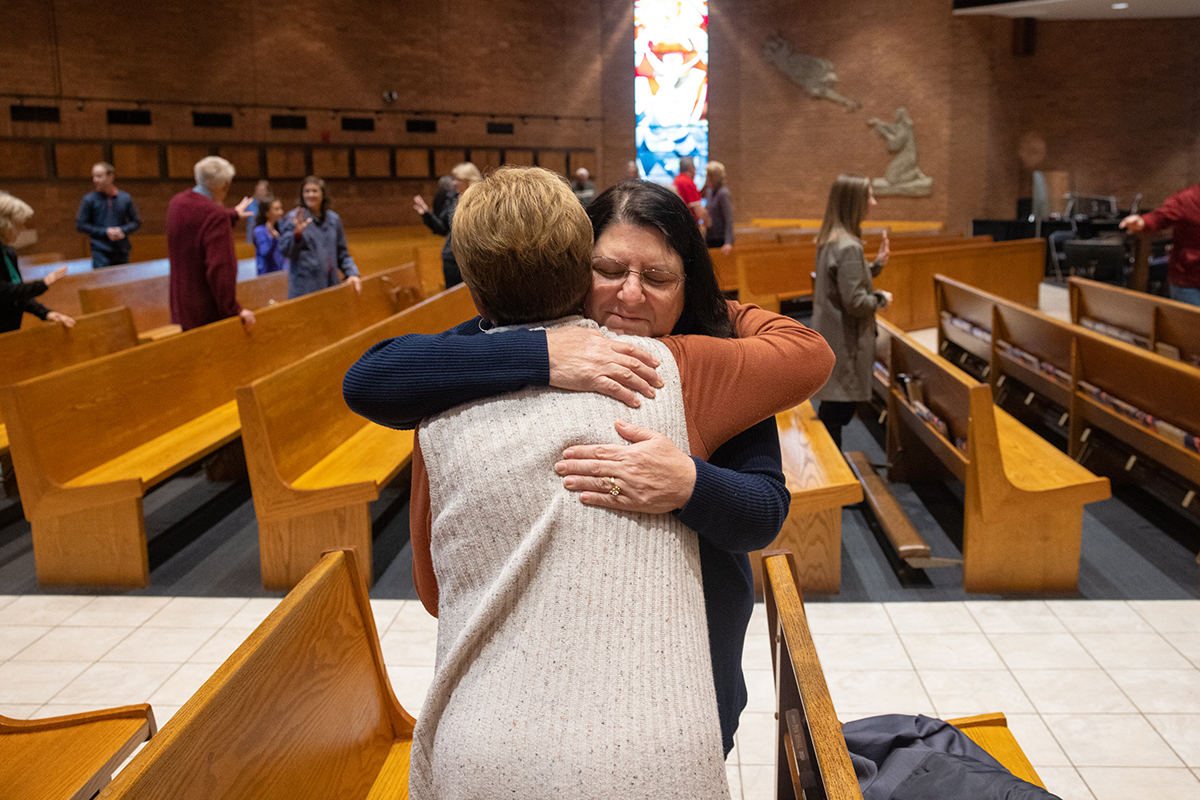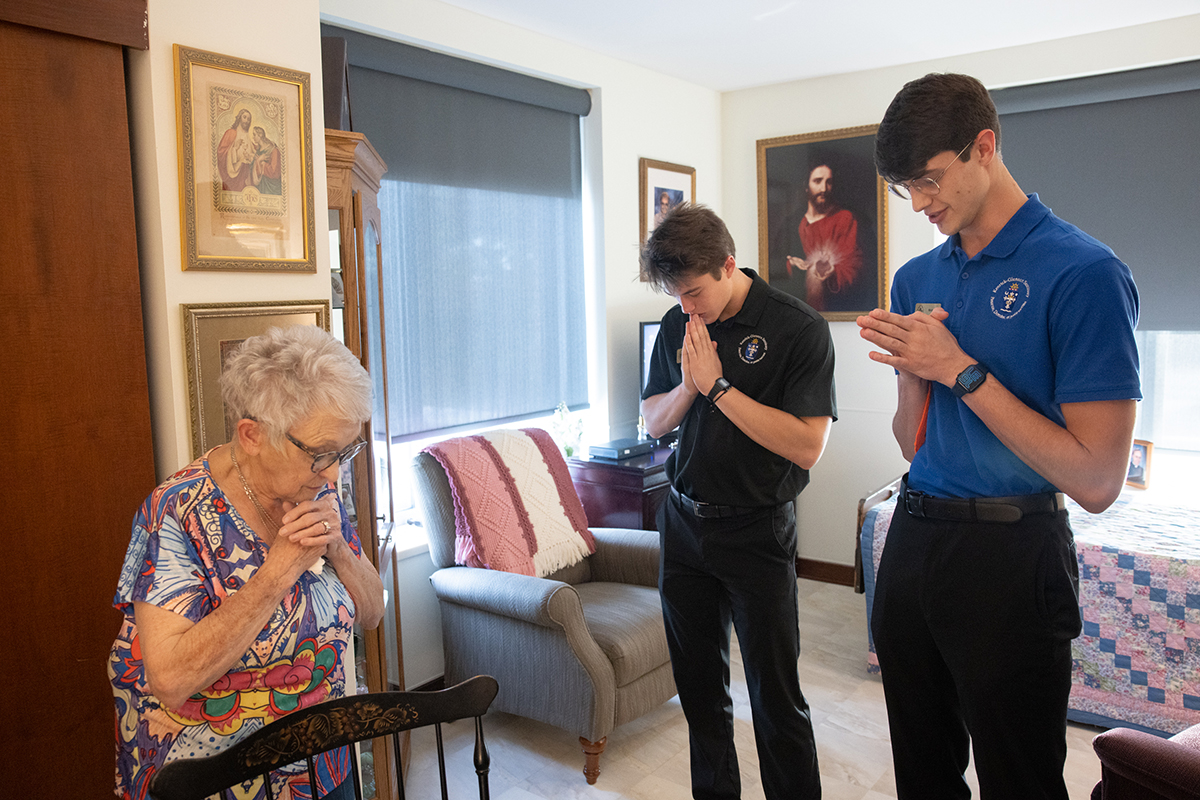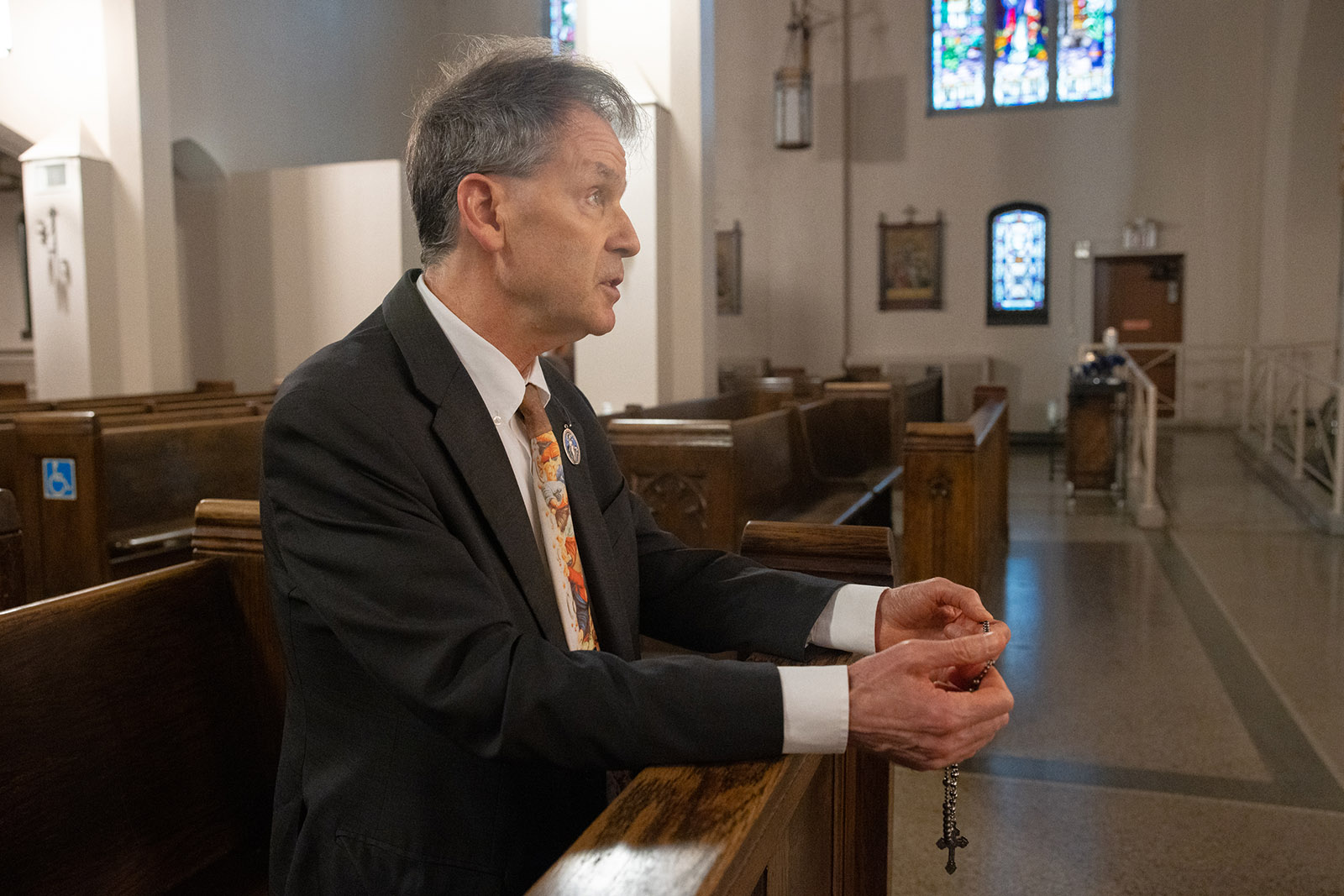Lent is an opportunity to frame our minds in preparation for discerning the future of the Church in the Archdiocese of St. Louis through All Things New

A Lenten frame of mind helps as we discern the future
Lent is a time of prayer, fasting and almsgiving when Catholics unite closer to the Lord in His suffering for our salvation.
This Lent and beyond, Catholics are being asked to discern the future of the Archdiocese of St. Louis through All Things New, a strategic pastoral planning initiative. There are three guiding principles to the process: unceasing prayer, a unifying vision for evangelization and intentional stewardship.
Here we examine those three principles within the context of the Lenten season:
Unceasing Prayer

Striving to work on a relationship with God is an ideal goal for Lent. Just as praying well can strengthen a relationship with God, so, too, a developed relationship allows people to move beyond themselves when they enter prayer, said Father Herb Weber, host of the Twenty Three Podcast and a priest of the Diocese of Toledo, Ohio.
“If there is a universal concern among people of faith, it comes with phrases like, ‘I wish I could pray better’ or ‘I don’t know how to really pray,’” he wrote in a recent column for Catholic News Service. “Across the spectrum of Church membership, people desire a fuller experience of prayer.”
Prayer is about working on the relationship with God, which means going beyond oneself, Father Weber said. It needs to come from the heart and be filled with a sharing of who a person is and what may be taking place in his or her life.
Prayer also takes time and effort. Carving out time in our schedules to be with the Lord is important. Having a prayer chair or corner can help in our efforts to be intentional about prayer, as well as reading Scripture, allowing it to speak to us in a personal way. We also must take time to listen to what God is saying, too.
Unceasing prayer is one of the three guiding principles of All Things New, the Archdiocese of St. Louis’ strategic pastoral planning initiative. As part of that, Catholics are being asked to pray for the guidance of the Holy Spirit as they discern the future of the local Church.
At the heart of this unceasing prayer should be a desire to answer Jesus’ commission to “Go and Make Disciples.” All of the Church’s ministries — schools, hospitals, food banks, homeless shelters, etc. — fall short of the mark if leading people into a relationship with Jesus and His Church isn’t the focus.
We also pray that we are able to use the spiritual and material resources we have inherited and those that God has given us, so that we may generate new ways of evangelization for today and generations to come.
Local, regional and archdiocesan prayer events will be held throughout the archdiocese. For more information on that and other resources, including monthly prayer intentions from Archbishop Mitchell Rozanski, weekly prayer intentions for Sunday Masses and Holy Hour Resources for evangelization, see allthingsnew.archstl.org/ Guiding-Principles/Unceasing-Prayer.
Unifying Vision for Evangelization

From the very beginning of creation, God has wanted our hearts. He created us to be in relationship with Him. “God, infinitely perfect and blessed in Himself, in a plan of sheer goodness, freely created man to make him share in His own blessed life. For this reason, at every time and in every place, God draws close to man. He calls man to seek Him, to know Him, to love Him with all his strength. He calls together all men, scattered and divided by sin, into the unity of His family, the Church.” (Catechism of the Catholic Church, #1)
Having a heart for God and His Church necessarily means that we must also have a heart for drawing others into the same joy of the relationship with God that we have experienced. As we develop a heart for God and His mission, it’s important that we also develop a heart for the Church that He gave us to radiate His light to the world.
Moving deeper into the heart of the Church always, at the same time, moves us out toward the world to share the Good News and lead all we meet into life in the Church. We cannot separate these realities.
We are called to an evangelization that often expresses itself as walking with people throughout their everyday lives, witnessing to the love that we have received and then inviting those that we have developed relationships with to receive God’s love.
Adapted from the All Things New “Preparing for Mission Guidebook.”
During Lent, here are a few simple ways to evangelize to others:
Ash Wednesday: What’s with that dirt on your head?
Who hasn’t gotten that question on Ash Wednesday before? Do you feel silly when people ask you about your ashes? And is it hard to answer their questions? Having ashes on your forehead isn’t just some weird Catholic thing; it’s a tradition that finds its roots in the Old Testament. “I turned to the Lord God, to seek help, in prayer and petition, with fasting, sackcloth, and ashes” (Daniel 9:3). When the ashes are placed on our foreheads in the sign of the cross, it is a reminder of several things. First, it is a call to repentance: a physical sign that we are sinners in need of forgiveness, which is how the prophets used it in the Old Testament. Second, it is to remind us that God created us from the earth and when we die, we will return to it. But here’s the best part: As Pope Benedict XVI has said, “Man is dust and to dust he shall return, but dust is precious in God’s eyes because God created man, destining him to immortality.” God so loves us that, even when our bodies return to the dust, our souls are meant to live forever with Him. The ashes symbolize all of this.
External Sacrifice: So why exactly are you not eating candy for the next month?
This is a very popular penance during Lent, and the questions about it are just as popular. Heaven forbid you should avoid the cake at the birthday party! You LOVE cake! But it’s Lent — a time for penance and sacrifice. Christ has said, “If anyone wishes to come after me, he must deny himself and take up his cross daily and follow me” (Luke 9:23). Giving up something we enjoy strengthens our love for Christ and our resilience against temptation. As Pope Benedict XVI said in his Lenten address of 2009, “Through fasting and praying, we allow (Christ) to come and satisfy the deepest hunger that we experience in the depths of our being: the hunger and thirst for God.” It unites us with Christ’s own sacrifices and gives us a deeper appreciation of the blessings in our lives.
Source: United States Conference of Catholic Bishops
Intentional Stewardship

One of the main tenets of stewardship is that we trust God is going to take care of us. Our giving — traditionally found in the areas of time, talent and treasure — should occur with the intention that we do not expect anything in return, said Dave Baranowski, director of stewardship education in the Archdiocese of St. Louis.
As Catholics in the archdiocese discern the future of the local Church, it’s important to look outward toward the greater needs of the Church beyond our own parish boundaries, Baranowski said. “We also need to look at our interior conversion and what God is calling us to use with our gifts,” he said. “It might be a different ministry or format; it’s important to look creatively at this.”
Looking at Jesus’ outward disposition in the Stations of the Cross is a perfect Lenten analogy. “Here’s Jesus getting beaten, but He’s always concerned about everybody else along the way,” Baranowski said. From accepting His cross, to consoling the women of Jerusalem who encounter Him, and promising His kingdom to the Good Thief, Jesus models the idea: “How do we focus on other people and God’s will?”
All Things New should be a process that ultimately draws people closer to Christ and His Church, Baranowski said.
“This is our chance to really do what we pray for — to live for the greater glory of God and not for own self interests,” he wrote in a recent column in the Review. “As we go through the All Things New planning process, let’s stretch our hearts; let’s go for greatness! We were made for more. We were made for God!”
>> Archdiocesan Lenten regulations
“For God so loved the world that He gave His only Son, so that everyone who believes in Him might not perish but might have eternal life. For God did not send His Son into the world to condemn the world, but that the world might be saved through Him.” (John 3:16-17)
The Church has always helped us fulfill these words of Jesus by prescribing very definite penance for all Catholics, so that we too might have eternal life. Accordingly, the pope and the American bishops have outlined obligatory fasting and abstinence as follows:
Ash Wednesday (March 2), all Fridays of Lent and Good Friday (April 15) are days of abstinence for all Catholics from age 14 onwards. On Ash Wednesday and Good Friday, fasting, as well as abstinence, is also obligatory for those from the ages of 18-59. Abstinence means refraining from meat. Fasting means one full meal a day, with two smaller meals and nothing between meals (liquids are permitted). No Catholic will lightly excuse himself or herself from this obligation.
We should strive to make all days of Lent a time of prayer and penance. Following are several resources that can aid in finding different forms of prayer and penance.
>> LENTEN RESOURCES
Here are several resources for Lent:
Augustine Institute Formed: formed.org
Best Lent Ever daily reflections: dynamiccatholic.com/best-lent-ever
Bishop Barron Word on Fire Lenten Reflections: www.lentreflections.com
St. Louis Review’s past stories about Lent: https://stlreview.com/3GNA8Qo
Lenten resources from the USCCB: https://stlreview.com/3gOrw18
Lent is a time of prayer, fasting and almsgiving when Catholics unite closer to the Lord in His suffering for our salvation. This Lent and beyond, Catholics are being asked … Lent is an opportunity to frame our minds in preparation for discerning the future of the Church in the Archdiocese of St. Louis through All Things New
Subscribe to Read All St. Louis Review Stories
All readers receive 5 stories to read free per month. After that, readers will need to be logged in.
If you are currently receive the St. Louis Review at your home or office, please send your name and address (and subscriber id if you know it) to subscriptions@stlouisreview.com to get your login information.
If you are not currently a subscriber to the St. Louis Review, please contact subscriptions@stlouisreview.com for information on how to subscribe.







